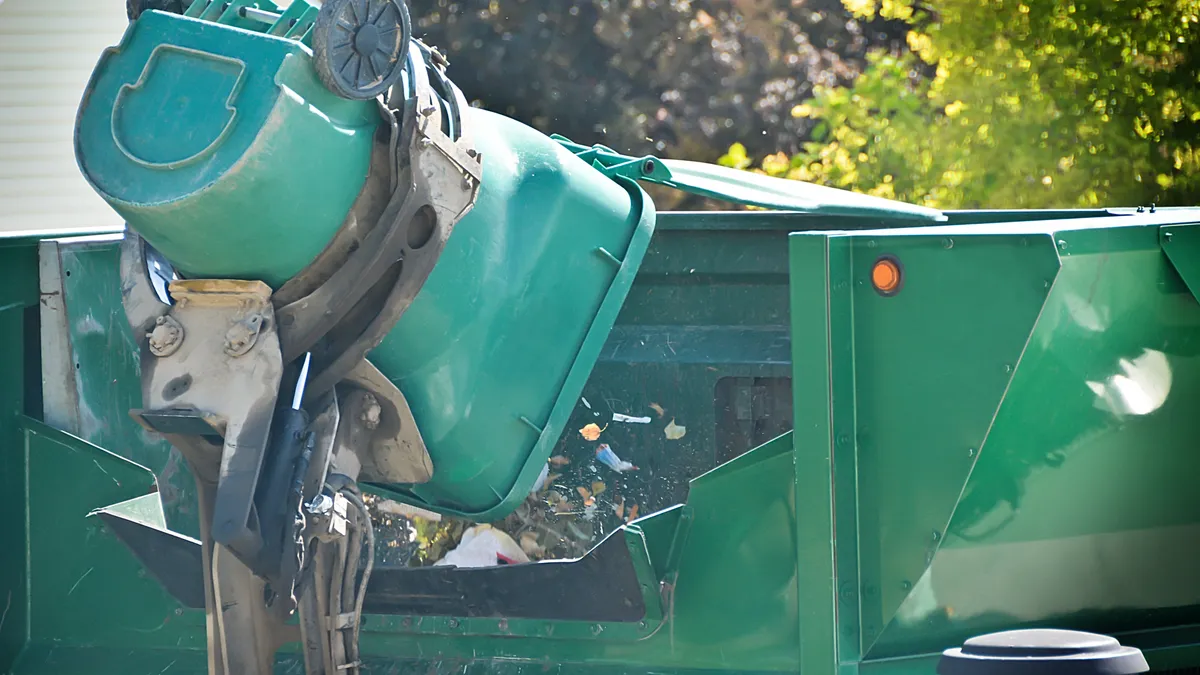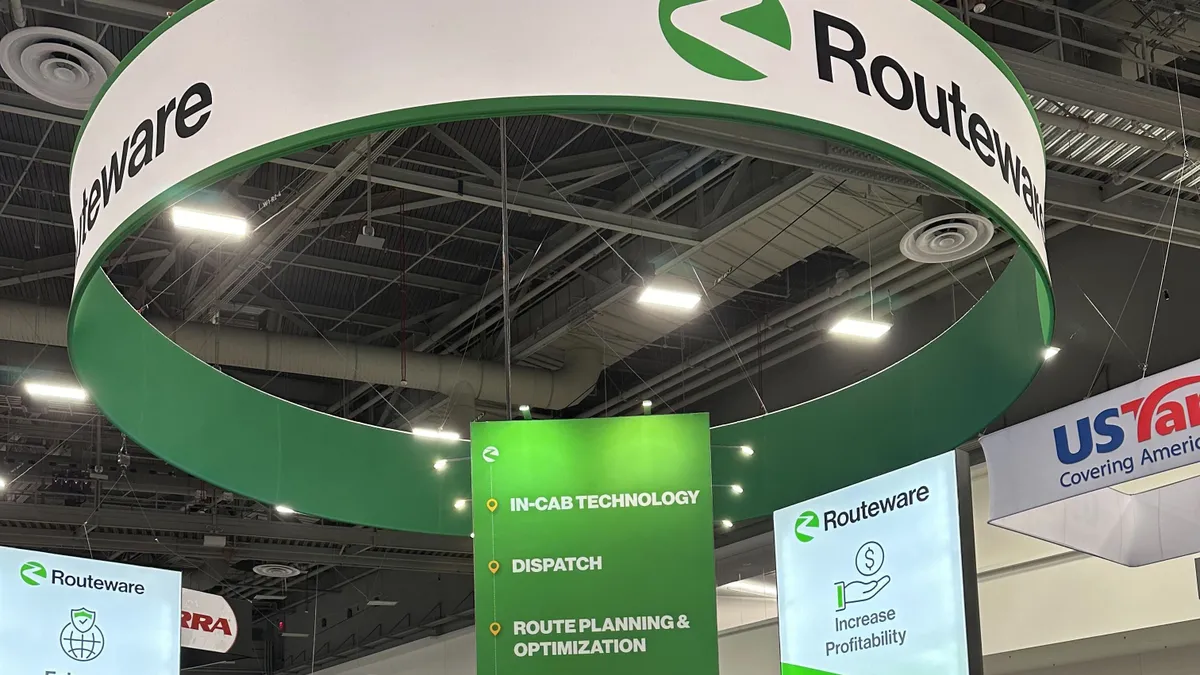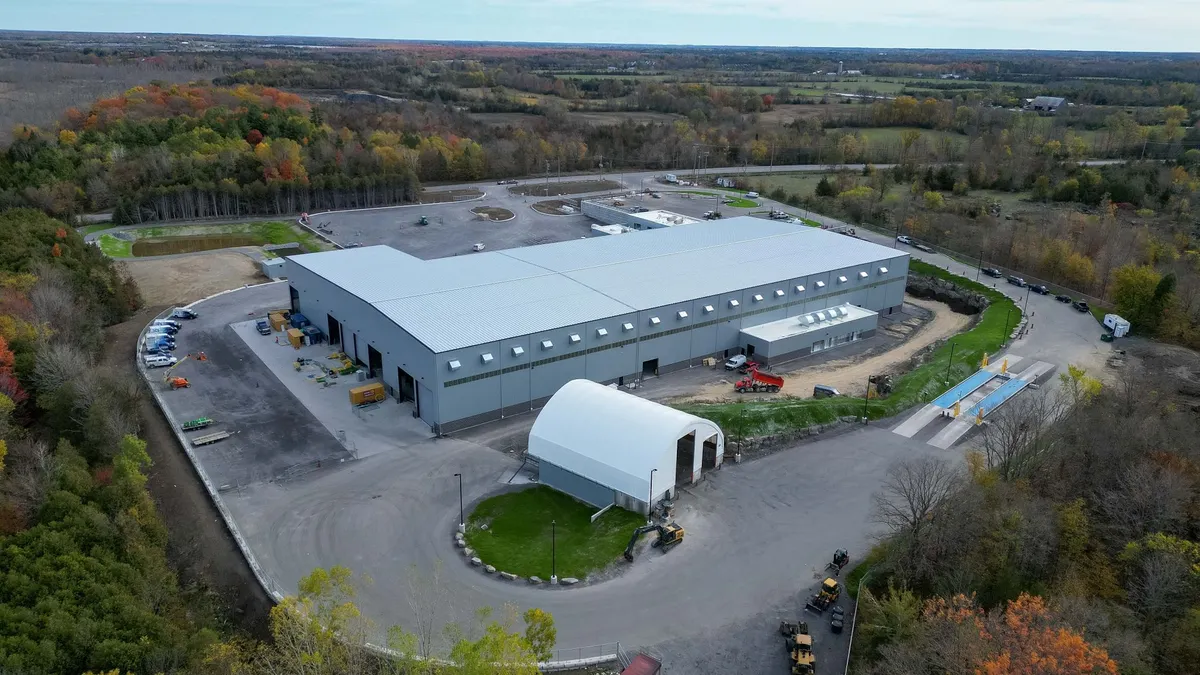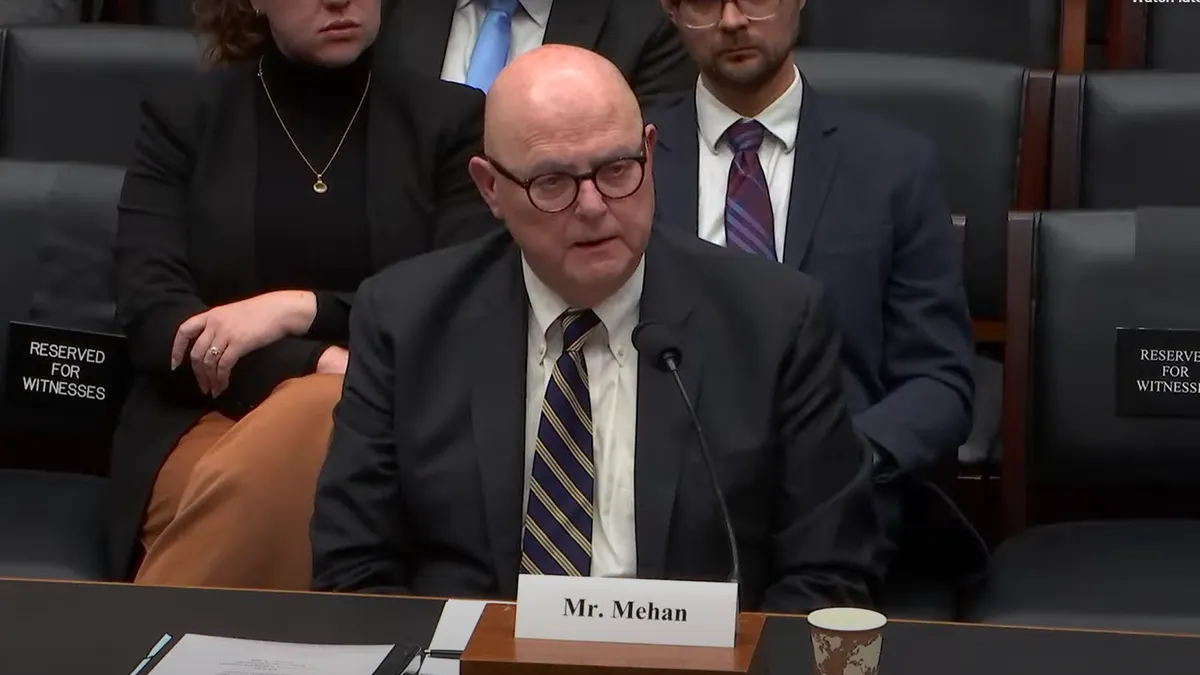Is automation a dirty word? While the idea of phasing out jobs can be a touchy subject, in the context of the labor-intensive solid waste and recycling industry WM suggests it’s the right decision for existing employees, as well as for customers and investors.
CEO Jim Fish specified in February that WM anticipates between 5,000 and 7,000 positions will go away through attrition between 2022 and 2026, saying "In this tight and expensive job market, it makes complete sense to use technology to reduce our dependency on certain high-turnover jobs.” And in April, Fish further explained that as some 300 customer service roles open up this year they’re expected to be automated rather than filled, and noted that other affected jobs are largely at MRFs and on rear-load residential collection routes.
There’s additional potential to automate more back office work, according to Chief Customer Officer Michael Watson, who said this intent doesn’t reflect a major strategic shift, but rather “an acceleration” of investments the company was making in technology. Watson, who’s been in this role for the past few years after multiple decades with WM, is helping to lead this “optimization.”
In an interview with Waste Dive, Watson detailed aims to smooth the impacts of turnover in existing markets, and allow for faster growth and scaling of opportunities that, in the past, may have been hamstrung by hiring and the cost of an additional employee. Being transparent with existing employees about the “upskilling” or “reskilling” in it for them is key, Watson said, noting past examples of sorters working their way up to becoming MRF managers or a welder who now leads maintenance support for the recycling organization.
Watson said that real benefits from tech implementations support continued momentum. Among the statistics shared: Automation at MRFs typically improves labor cost by 30%. The shift to automated residential service from rear-load service (nationwide, the company is roughly two-thirds of the way through its fleet conversion process) cuts injury rates in half, if not more. And about a month after introducing self-service capabilities for bulk waste pickup, transactions increased almost 130%.
This interview has been edited for clarity and brevity.
WASTE DIVE: What are some of the main factors driving WM to accelerate the transition to automation?
I think the one that's probably the most prominent is the impact of labor supply and labor inflation on our business. But really, the reason we're accelerating this is multifaceted.
Number one: obviously we want to continue to differentiate WM in the eyes of our customers and our employees. And I think these investments not only improve the employee experience with better tools, better technology, safer operations, more efficiency – as we've made investments in some of our digitalization around our customer experience, that's also improved our customer experience as well.
I think the most important piece that I see is being able to create capacity as we see opportunities to grow our business ... and really reduce the labor intensity along that continuum, but also be able to scale for growth. I look at opportunities for us to have more roll-off pulls, for example; the more efficient we can be, the more opportunity we can capitalize on some of the growth opportunities that we have when you're coming up against limited labor supply in certain instances on the operations side.
A lot of these jobs are high-turnover jobs, but I think that the most important thing here is to start to look at making these investments: How can we grow without adding an incremental head ? Or can we get more efficient in our operations so folks will stay with us longer?
What have the impacts or cost of turnover looked like for WM in recent years in some of the job categories that you're seeking to automate?
From the customer experience part of this equation, we've got customers that want to spend time with us engaging in a digital format. Our customer experience agents are spending time on a lot of transactional engagements versus much more comprehensive and much more challenging and engaging [ones]. Probably one of the highest-turnover roles we have is in our customer experience.
So what we're trying to do is, as we start to make investments in our customer experience — whether that's self-service for signing up with WM, whether that's engaging in servicing our customers — the more we can move our capabilities to a self-serve, that limits the impact that turnover has on our overall customer experience. And again, our goal is to manage through that attrition and add capabilities along that continuum so we can both improve our employee experience with more tools and technology, but also our customer experience with a digitalized customer.
The other one I think where we've struggled from a labor standpoint has been our residential line of business — and I don't think this is anything unique to our industry — but in our residential line of business it’s kind of a high-turnover, pretty labor-intensive job.
Residential, rear-end load [work is] very manual, they're getting in and out of the truck several hundred times a day, they're throwing garbage in the back of the truck. So we've made some significant strategy shifts to really accelerate our investment in transferring our customers to automation. That's also our customers containerizing their service and investing in those carts and investing in trucks so we could have a better employee experience.
What do fleet transitions to automated collection look like across the U.S.?
I think if you look across North America, the West Coast has probably the most mature containerized service as well as automation. I think it's kind of a mixed bag in the Midwest where it basically has kind of evolved. In some instances, you've got situations where sometimes the automated side loader is difficult to employ just from the geography or the narrowness of the streets ... So it is a little bit regionalized, but as we started to take a look at where the opportunities were, we’ve made some great progress. We still have a lot of opportunities to transition the rear-end load work into automatic side loads.
A lot of the work is also working with our customers and our residential customers to make sure we can communicate to them, ‘Hey, we're going to containerize this volume both on the recycling side as well as the MSW so we can introduce automation, be much more reliable, keep your communities cleaner.’ If we have containerized recycling versus bins, we're seeing a better set-out rate, much higher level of participation on recycling which is also part of our sustainability goals. So I think that that whole piece is just a part of the strategy we’re looking to really accelerate.
Automation can have really positive connotations, and for some people it can also have concerning connotations. How have you been messaging this acceleration to current employees?
If you specifically talk about the investment in automation on the collection side, it's viewed very positively. This is a very labor-intensive business. As I mentioned, the investment in automation, we've seen the proof points in our employee retention, their safety, their ability to service the customer … our employee attrition gets cut in half when we invest in automation, we see that purely in the math.
I think, to me, the best position we've taken is we've been extremely transparent with our employees about why we're making this investment in optimization. It really differentiates WM, making sure [we can be more efficient], we could scale for growth. But I think the other part which really excites our employees is the upskilling and that has to come hand-in-hand with making these investments in optimization and automation ... what's in it for the employee?
We've made some significant investments in [our MRFs.] Obviously, the investment in technology, robotics, a lot more computers — we've spent time reskilling our technicians and our MRF mechanics to be much more hands on and much more into the technical part of utilizing the computers and some of the technology, so that's proven to be a real positive.
Yes, [automation is] less labor intensive, but we have a lot of opportunity with our brand to grow our business. And if we can redeploy somebody in our operations to service another line of business [like] roll-off or we have a helper on the back of the truck that shifts the automation, we have the ability to provide them with schooling to get their CDL and they can improve their livelihood and and add value in another line of business as well.
What does the cost-benefit look like in terms of how long before investment pays off?
They're all very different … For example, bulky pickups for our entire call centers are a significant percentage — it's a long call. If we can digitize that and have our customers use a self tool or connect through our system to self serve, that payoff is immediate. Our customer service technicians can go focus on something else, or potentially you don't have to rehire a customer service technician if they decide to [depart] or take another role in the organization. So that's very immediate.
The investments that we think about in residential automation: the sooner you can get a truck that's automated, containerized and you can redeploy that human capital to another line of business — those are very immediate.
I think the one that probably is going to take the longest because it's just an investment is going to be in our MRF technology where we we've accelerated those, and we've seen those proof points about the robotics, the technology. We've not only reduced our labor which was hard to find, but this also plays into our sustainability goals to recycle more, create more diversion, and improve the quality of the recyclables that we manage. So these all kind of play together and we have a very methodical investment strategy based on the volume that we have at our sites, so those will take some time just because of the physical nature of investments, the time it takes to refurbish a specific recycling center. Those payoffs happen immediately after the technology is deployed, but it just takes time to go through the plans we have to accelerate those investments.
Aside from employee retention, cost savings, safety, things like that — are there other KPIs that are important in assessing the transition going forward?
The ones you've mentioned are very strong. I kind of look at this as not to be about job elimination; it's really about being able to scale for growth. Down the road, if we can provide an improved customer experience with less agents, and those agents that we have are [skilled] to handle complex customer issues versus the more transactional ones … I think that's what the proposition is versus ‘hey, let's look at how many heads have left WM.’
It also comes with having engaged employees and upskilling them as the needs of our business have evolved ... it’s just harder to find folks that want to drive a garbage truck and we're trying to prove that employee value proposition with upskilling, with investments in and benefits around their education and their families’ education.
I think no matter what business you're in there’s a war for talent and I feel this helps us to be well positioned. We've got a lot of initiatives in flight with solid proof points, and we're just continuing to accelerate those to build our employee value proposition, our customer value proposition, and really our competitive advantage.



















